Nigeria’s richest man Aliko Dangote escalated his fight with regulators on Sunday, accusing them of enabling cheap fuel imports that threaten local refineries.
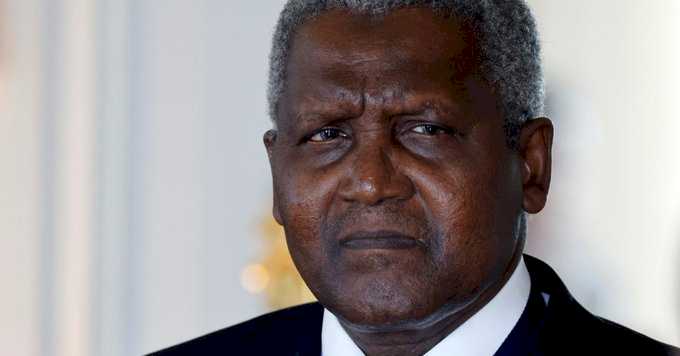
Nigeria’s richest man Aliko Dangote escalated his fight with regulators on Sunday, accusing them of enabling cheap fuel imports that threaten local refineries.

The yen strengthened on Monday ahead of a likely Japanese rate rise in a week that is packed with central bank decisions and key U.S. data that could help shape the Federal Reserve's near-term policy outlook.
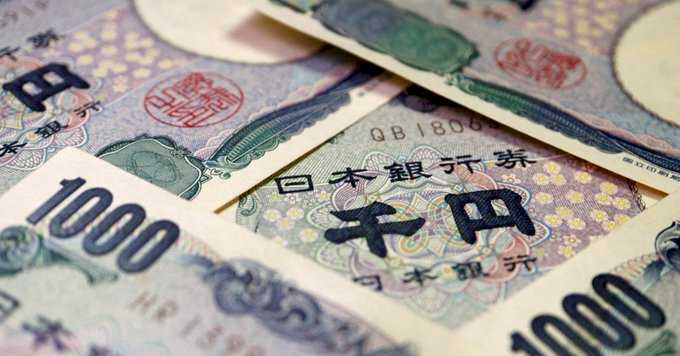
#BEIRUT — A man who carried out an attack in Syria that killed three U.S. citizens had joined Syria’s internal security forces as a base security guard two months earlier and was recently reassigned amid suspicions that he might be affiliated with the Islamic State group, a Syrian official told The Associated Press Sunday.
The attack Saturday in the Syrian desert near the historic city of Palmyra killed two U.S. service members and one American civilian and wounded three others. It also wounded three members of the Syrian security forces who clashed with the gunman, interior ministry spokesperson Nour al-Din al-Baba said.
Al-Baba said that Syria’s new authorities had faced shortages in security personnel and had to recruit rapidly after the unexpected success of a rebel offensive last year that intended to capture the northern city of Aleppo but ended up overthrowing the government of former President Bashar Assad.
“We were shocked that in 11 days we took all of Syria and that put a huge responsibility in front of us from the security and administration sides,” he said.
The attacker was among 5,000 members who recently joined a new division in the internal security forces formed in the desert region known as the Badiya, one of the places where remnants of the Islamic State extremist group have remained active.
Attacker had raised suspicions
Al-Baba said the internal security forces’ leadership had recently become suspicious that there was an infiltrator leaking information to IS and began evaluating all members in the Badiya area.
A delicate partnership
The incident comes at a delicate time as the U.S. military is expanding its cooperation with Syrian security forces.
The U.S. has had forces on the ground in Syria for over a decade, with a stated mission of fighting IS, with about 900 troops present there today.
Before Assad’s ouster, Washington had no diplomatic relations with Damascus and the U.S. military did not work directly with the Syrian army. Its main partner at the time was the Kurdish-led Syrian Democratic Forces in the country’s northeast.
That has changed over the past year. Ties have warmed between the administrations of U.S. President Donald Trump and Syrian interim President Ahmad al-Sharaa, the former leader of an Islamist insurgent group Hayat Tahrir al-Sham that used to be listed by Washington as a terrorist organization.
In November, al-Sharaa became the first Syrian president to visit Washington since the country’s independence in 1946. During his visit, Syria announced its entry into the global coalition against the Islamic State, joining 89 other countries that have committed to combating the group.
U.S. officials have vowed retaliation against IS for the attack but have not publicly commented on the fact that the shooter was a member of the Syrian security forces.
Critics of the new Syrian authorities have pointed to Saturday’s attack as evidence that the security forces are deeply infiltrated by IS and are an unreliable partner.
Mouaz Moustafa, executive director of the Syrian Emergency Task Force, an advocacy group that seeks to build closer relations between Washington and Damascus, said that is unfair.
Despite both having Islamist roots, HTS and IS were enemies and often clashed over the past decade.
Among former members of HTS and allied groups, Moustafa, said, “It’s a fact that even those who carry the most fundamentalist of beliefs, the most conservative within the fighters, have a vehement hatred of ISIS.”
“The coalition between the United States and Syria is the most important partnership in the global fight against ISIS because only Syria has the expertise and experience to deal with this,” he said.
Later Sunday, Syria’s state-run news agency SANA reported that four members of the internal security forces were killed and a fifth was wounded after gunmen opened fire on them in the city of Maarat al-Numan in Idlib province.
It was not immediately clear who the gunmen were or whether the attack was linked to the Saturday’s shooting.
Abby Sewell, The Associated Press
View 95 times
Both countries confirmed that large-scale fighting, which was set off by a skirmish on Dec. 7 that wounded two Thai soldiers, continued Sunday. The two sides are battling over longstanding competing claims to patches of frontier land, some of which contain centuries-old temple ruins.
More than two dozen people on both sides of the border have officially been reported killed in the past week’s fighting, while more than half a million have been displaced.
Reporters from The Associated Press arrived at the scene of Sunday’s rocket impact in Sisaket province’s Kantharalak District about 10 minutes after it hit. They witnessed the body of a man totally wrapped in bandages being put on a stretcher that was taken to an ambulance.
A house a couple of hundred meters (yards) away was in flames, with village volunteers attempting to put out the fire with buckets of water. A piece of shrapnel believed to be from the same rocket was embedded nearby in the road.
The victim, identified as Don Patchapan, was killed in the heart of a residential area near a school, according to a Thai Army statement. Thai Government spokesperson Siripong Angkasakulkiat condemned Cambodia for deliberately firing into civilian areas, saying that such an action was “cruel and inhumane.”
Thailand earlier reported civilian deaths during the renewed conflict, but most of them already had underlying health issues and died during an evacuation.
Cambodia has deployed truck-mounted BM-21 rocket launchers with a range of 30-40 kilometres (19-25 miles). Each can fire up to 40 rockets at a time but cannot be precisely targeted. They have landed largely in areas from where most people have already been evacuated.
Thai authorities say Cambodia has launched thousands of the rockets on virtually a daily basis. Thailand, meanwhile, has been carrying out airstrikes with its fighter planes, with Cambodia saying the bombing continued on Sunday. Both sides have employed drones for surveillance and delivering bombs.
Residents in another village in Kantharalak said several houses there were damaged by a rocket attack Saturday. Kanbancha Charoensri, who was in the village during the attack, said several rockets landed nearby and injured a few people.
“Houses that were hit directly were totally destroyed,” he said. “The ground was shaking so much. It was so scary.”
The Thai military has acknowledged 16 of its troops have died during the fighting, and estimated Sunday that there have been at least 221 fatalities among Cambodian soldiers. Cambodia denounced the Thai count of its dead as disinformation but has not yet acknowledged any military casualties. It has said at least 11 civilians have been killed and more than six dozen wounded.
Cambodia Prime Minister Hun Manet delivered a morale-boosting message to his countrymen on Sunday, writing on social media that he is proud to see this nation’s strength “in this situation where our country is facing difficulties due to aggression from neighboring countries.”
The new fighting derailed a ceasefire promoted by U.S. President Donald Trump that ended five days of earlier combat in July. It had been brokered by Malaysia and pushed through by pressure from Trump, who threatened to withhold trade privileges unless Thailand and Cambodia agreed. It was formalized in more detail in October at a regional meeting in Malaysia that Trump attended.
Trump announced this past Friday that the two countries had agreed at his urging to renew the ceasefire, but Thai Prime Minister Anutin Charnvirakul denied making any commitment and Cambodia announced it was continuing to fight in what it said is self-defense.
A Thai Navy warship in the Gulf of Thailand joined the fighting on Saturday morning, trading fire with guns based in Cambodia’s southwestern province of Koh Kong. Each side blamed the other for initiating the exchange on a new front.
——
Tian Macleod Ji And Jintamas Saksornchai, The Associated Press
Jintamas reported from Surin, Thailand. Sopheng Cheang contributed from Preah Netr Preah, Cambodia.
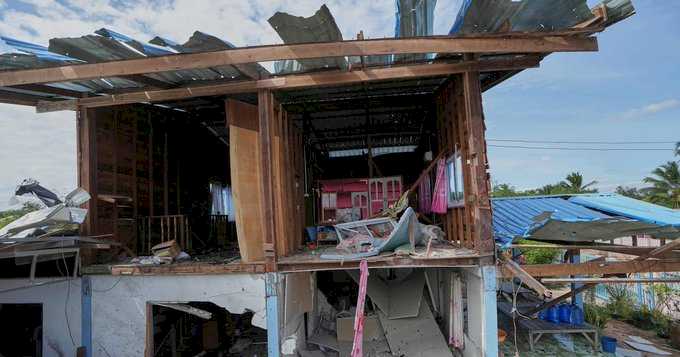
View 99 times
Children in DR Congo recount gang rape, sexual slavery by #M23 rebels. A child is raped there every 30 minutes, the United Nations children’s agency UNICEF said earlier this year.
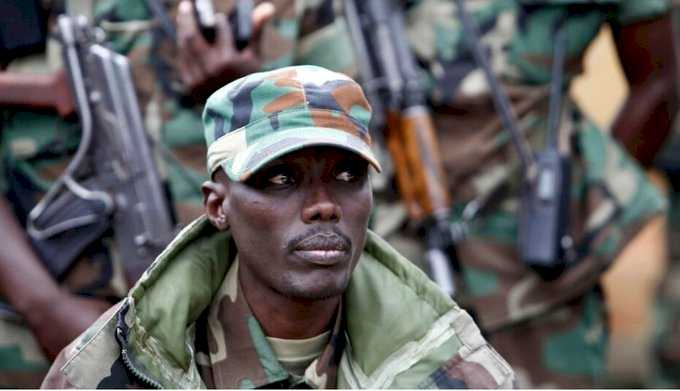
View 100 times
Germany says foils Islamist plot to attack Christmas market. German authorities said Saturday they had arrested five men on suspicion of involvement in an Islamist plot to plough a vehicle into people at a Christmas market.
Officials have been on high alert during the festive season, after a deadly car-ramming attack at a market in the city of Magdeburg last Christmas shocked the nation.
Police and prosecutors said they had detained an Egyptian, three Moroccans and a Syrian on Friday over the plan to carry out the attack in southern Bavaria state.
Investigators suspect “an Islamist motive” for the plot, according to the statement.
The Egyptian, aged 56, was an imam at a mosque in the Dingolfing-Landau district, German newspaper Bild reported.
According to authorities, he had called for an attack to be carried out on a Christmas market in the area “using a vehicle in order to kill or injure as many people as possible”.
The Moroccans -- aged 30, 28 and 22 -- allegedly then agreed to carry out the attack while the Syrian, 37, encouraged them.
All the suspects were brought before a magistrate on Saturday after their arrest and are in custody.
Joachim Herrmann, state interior minister in Bavaria, told Bild the “excellent cooperation between our security services” had helped to prevent “a potentially Islamist-motivated attack”.
Authorities did not say where the suspects were arrested.
It was also not clear when the attack was supposed to take place, how detailed the plans were, and which market was to be targeted.
Rising security costs
Last year’s attack in Magdeburg, which saw a car barrel through a crowded market, killed six people and wounded more than 300.
A Saudi doctor -- who is a critic of Islam and an adherent of far-right views and radical conspiracy theories -- went on trial last month accused of carrying out the rampage.
Taleb Jawad al-Abdulmohsen, a 51-year-old psychiatrist, has admitted ploughing a rented SUV through the market.
In 2016 an Islamist drove a truck into a crowd at a Christmas market in Berlin, killing 12 people.
The rampages have fuelled a heated debate about the security of the festive installations, which are hosted by nearly every town and consist of stalls with merchants selling gifts, hot mulled wine, sausages and sweets.
Some cities have cancelled the beloved winter tradition because of the mounting costs and complexity of ensuring security.
Magdeburg’s Christmas market went ahead this year but only received approval shortly before opening.
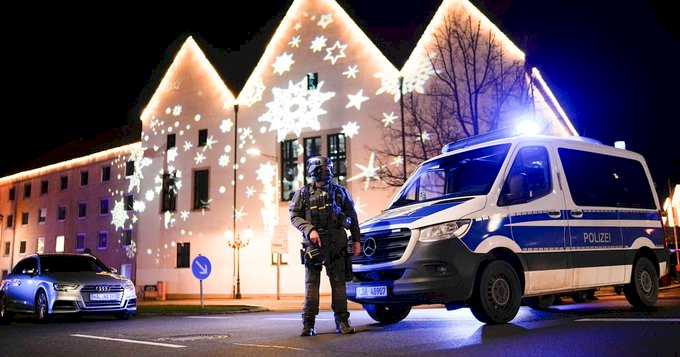
View 101 times
Escapism or exaltation? ‘Narco-culture’ games raise concern in #Mexico,
In violence-riddled Mexico, children as young as 13 are hooked on bloody video games that vividly recreate the horrors of the country’s narco war.
Some experts say it’s a way of coping. Critics, including President Claudia Sheinbaum, see it as monetized glorification of a genre known as “narco culture.”
With thousands of daily users, the games allow players to choose whether they want to be a cartel hitman, a police officer or a soldier.
There are wild chases and brutal shootouts, gold-plated pistols, personalized bulletproof helmets, and souped-up cars.
“It really draws me in, seeing things I’d like to have in real life -- for example, who wouldn’t want to have a Lamborghini, or a big truck, a big house?” gaming fanatic Alan Crespo, a 24-year-old farmer from San Blas on Mexico’s Pacific coast, told AFP.
Crespo is on the older side of the player age spectrum, with most between 13 and 18 and hailing primarily from northern Mexican states like Sinaloa, Chihuahua and Baja California -- synonymous with cartel violence.
This age group was born amid the wave of violence unleashed in 2006, when the Mexican government militarized the fight against drug trafficking -- a strategy that has claimed nearly half a million lives.
Hell’s Troop
Dozens of war-like games can be found on online platform Roblox, which allows programming enthusiasts to design their own video games for others to play.
The most popular ones attract up to 1,000 users a day. The games are free, though players can purchase better weapons or uniforms with real money.
The more realistic and gruesome a game is, the more popular, developers say.
“Players aren’t interested in seeing made-up names of criminal groups,” said Angel Villaverde, a 19-year-old who designs games on his computer in Monterrey in Mexico’s northeast.
Users of the game “Tamaulipas Belico,” for example, can choose to play as a member of the Jalisco New Generation Cartel (CJNG) or of the Northeast Cartel (CDN).
Both have been designated “foreign terrorist organizations” by U.S. President Donald Trump and are responsible for innumerable deaths, including of civilians.
Matches entail killing off one’s enemies to take control of buildings, usually gas stations or shops.
Opponents patrol in camouflaged army pickups or in vehicles decorated with a demon drawing and the number 666 -- the insignia of the CDN’s Tropa del Infierno (Hell’s Troop) armed wing, known for its extreme brutality.
‘Apology for violence’
Mexico’s so-called “narco-culture” can also be found in music, films and fashion items glorifying the criminal life.
Sheinbaum rejects what she considers an “apology for violence” and has launched a campaign against the sub-culture, including an eight per cent tax on video games with violent content.
Behavioral scientists say that through gaming, young people may feel they have a sense of control over a violent reality that makes them anxious.
Student Alejandro Solorzano, 18, a game developer from Tijuana, notes that players are “fascinated by going around doing criminal activities.”
“It’s something warlike, it’s something grotesque, but it’s fictional at the same time” he told AFP.
Ainhoa Vasquez of Chile’s Federico Santa Maria Technical University, says gaming may also be a way of “making sense” of a violent society, of “transferring real anguish” to a fictional realm.
These experiences can be “a catharsis,” said Vasquez, who studies cultural representations of the drug trade.
The platform Roblox, which reported some 112 million daily users worldwide in the second quarter of this year, recently tightened its controls to protect minors.
Among other measures, it implemented a system to verify users’ ages to prevent harassment by adults on the platform.
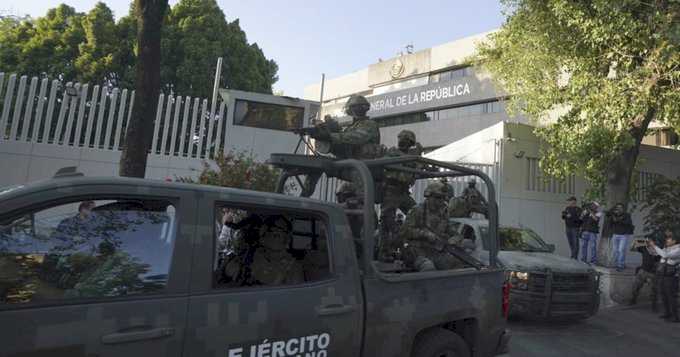
View 104 times
2 killed in #Russia while #Ukraine’s energy infrastructure is targeted as peace talks press on,
At least two people were killed in a drone attack in Russia’s southwestern Saratov region and parts of Ukraine went without power following targeted assaults on energy infrastructure, local authorities said Saturday, as U.S.-led peace talks on ending the war press on.
The drone attack damaged a residential building and several windows were also blown out at a kindergarten and clinic, said Saratov regional Gov. Roman Busargin.
Russia’s defence ministry said it had shot down 41 Ukrainian drones over Russian territory overnight.
In Ukraine, Russia launched overnight drone and missile strikes on five Ukrainian regions, targeting energy and port infrastructure.
Ukrainian President Volodymyr Zelenskyy said Russia had sent over 450 drones and 30 missiles into Ukraine overnight.
“Thousands of families are now left without electricity after strikes last night in Kirovohrad, Mykolaiv, Odesa, Sumy, Kharkiv, Kherson and Chernihiv regions,” he wrote on Telegram.
An attack on the Black Sea city of Odesa caused grain silos to catch fire at the port, Ukrainian deputy prime minister and reconstruction minister Oleksiy Kuleba said.
Two people were wounded in attacks on the wider Odesa region, according to regional head Oleh Kiper.
Kyiv and its Western allies say Russia is trying to cripple the Ukrainian power grid and deny civilians access to heat, light and running water for a fourth consecutive winter, in what Ukrainian officials call “weaponizing” the cold.
The latest round of attacks came after Kremlin adviser Yuri Ushakov said Friday that Russian police and National Guard will stay on in eastern Ukraine’s Donbas and oversee the industry-rich region, even if a peace settlement ends Russia’s nearly four-year war in Ukraine. This underscores Moscow’s ambition to maintain its presence in Donbas post-war. Ukraine is likely to reject such a stance as U.S.-led negotiations drag on.
Moscow will give its blessing to a ceasefire only after Ukraine’s forces have withdrawn from the front line, Ushakov said in comments published in Russian business daily Kommersant.
Meanwhile, Germany is set to host Zelenskyy on Monday for talks as peace efforts gain momentum and European leaders seek to steer negotiations.
For months, American negotiators have tried to navigate the demands of each side as U.S. President Donald Trump presses for a swift end to Russia’s war while growing increasingly exasperated by delays. The search for possible compromises has run into a major obstacle over who keeps #Ukrainian territory currently occupied by Russian forces.
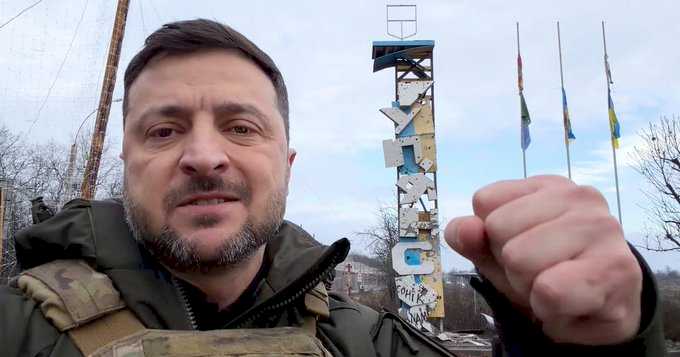
View 104 times
U.S. accuses #Rwanda of violating peace deal as #M23 rebels seize key city in eastern #Congo.
The remarks by U.S. Ambassador to the United Nations Mike Waltz came as more than 400 civilians have been killed since the Rwanda-backed M23 rebels escalated their offensive in eastern Congo’s South Kivu province, according to regional officials who also say that Rwandan special forces were in the strategic city of Uvira.
Waltz told the UN Security Council that the U.S. is “profoundly concerned and incredibly disappointed with the renewed outbreak of violence” by M23.
“Rwanda is leading the region towards increased instability and war,” Waltz warned. “We will use the tools at our disposal to hold to account spoilers to peace.”
He called on Rwanda to respect Congo’s right to defend its territory and invite friendly forces from neighbouring Burundi to fight alongside Congolese forces. He also said the U.S. is engaging with all sides “to urge restraint and to avoid further escalation.”
M23’s latest push
The rebels’ latest offensive comes despite a U.S.-mediated peace agreement signed last week by the Congolese and Rwandan presidents in Washington.
The accord didn’t include the rebel group, which is negotiating separately with Congo and agreed earlier this year to a ceasefire that both sides accuse the other of violating. However, it obliges Rwanda to halt support for armed groups like M23 and work to end hostilities.
The rebels’ advance pushed the conflict to the doorstep of neighboring Burundi, which has maintained troops in eastern Congo for years, heightening fears of a broader regional spillover.
Congo’s ministry of communication confirmed in a statement Friday that M23 has seized the strategic port city of Uvira in eastern Congo, on the northern tip of Lake Tanganyika and directly across from Burundi’s largest city, Bujumbura.
Uvira was Congo’s government’s last major foothold in South Kivu after the provincial capital of Bukavu fell to the rebels in February. Its capture allows the rebels to consolidate a broad corridor of influence across the east.
M23 said it had taken control of Uvira on Wednesday afternoon, following a rapid offensive since the start of the month. Along with the more than 400 killed, about 200,000 have been displaced, regional officials say.
Concerns over an escalation
Civilians fleeing eastern Congo have also crossed into Burundi, and there have been reports of shells falling in the town of Rugombo, on the Burundian side of the border, raising concerns about the conflict spilling over into Burundian territory.
More than 100 armed groups are vying for a foothold in mineral-rich eastern Congo, near the border with Rwanda, most prominently M23. The conflict has created one of the world’s most significant humanitarian crises, with more than seven million people displaced, according to the UN agency for refugees.
Congo, the U.S. and UN experts accuse Rwanda of backing M23, which has grown from hundreds of members in 2021 to around 6,500 fighters, according to the UN.
Waltz said Rwandan forces have provided “logistics and training support to M23” and are fighting alongside the rebels in eastern Congo, with “roughly 5,000 to 7,000 troops as of early December.”
Congo calls for more pressure on Rwanda
Congo’s Foreign Minister Therese Kayikwamba Wagner accused Rwanda of trampling on the peace agreement, which she described as bringing “hope of a historic turning point.”
She warned, however, that the “entire process … is at stake,” and urged the Security Council to impose sanctions against military and political leaders responsible for the attacks, ban mineral exports from Rwanda and prohibit it from contributing troops to UN peacekeeping missions.
“Rwanda continues to benefit, especially financially but also in terms of reputation, from its status as a troop-contributing country to peacekeeping missions,” Wagner told The Associated Press.
Rwanda currently is one of the largest contributors of UN peacekeepers, with nearly 6,000 Rwandan troops.
Wagner also said economic agreements signed with the Trump administration as part of the peace deal will hinge on stability. “We have told our American partners that we cannot envision any path toward shared economic prosperity without peace,” she told the AP.
Eastern Congo, rich in critical minerals, has been of interest to Trump as Washington looks for ways to circumvent China to acquire rare earths, essential to manufacturing fighter jets, cell phones and more.
Wagner said the economic partnership is still at an early stage.
“Everything will start to take shape and become much more tangible once the joint governance mechanisms are put in place,” she said. “What we want is a win-win partnership ... far beyond the single issue of minerals and their transfer,” she added.
Rwanda accuses Congo of ceasefire violations
Rwanda’s Ambassador to the UN Karoli Martin Ngoga accused Congo of repeatedly breaking the ceasefire. He also accused the Congolese government of supporting the mostly Hutu Democratic Forces for the Liberation of Rwanda, which “threatens the very existence of Rwanda and its people.”
Nearly two million Hutus from Rwanda fled to Congo after the 1994 Rwandan genocide that killed 800,000 Tutsi, moderate Hutus and others. Rwandan authorities have accused Hutus who fled of participating in the genocide, alleging that the Congolese army protected them.
“Rwanda reiterates its full commitment to implement its part of the agreement,” Ngoga told the Security Council.
While Rwanda denies the claim that it backs M23, it acknowledged last year that it has troops and missile systems in eastern Congo, allegedly to safeguard its security. UN experts estimate there are up to 4,000 Rwandan forces in Congo.
___
Banchereau reported from Dakar, Senegal. Associated Press writer Jean-Yves Kamale in Kinshasa, Congo contributed to this report.
Edith M. Lederer And Mark Banchereau, The Associated Press
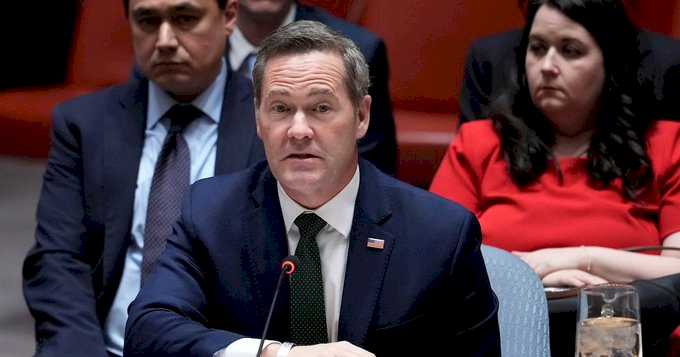
View 109 times
#Putin reaffirms support for #Venezuela’s Maduro over U.S. tensions.
The call comes after the United States seized an oil tanker off the Venezuelan coast, the latest escalation in the long-standing friction between the two countries.
Russia has fostered warm ties with Venezuela, and Maduro visited Moscow earlier this year, attending an annual military parade and signing a broad partnership agreement with Putin.
In a phone call on Thursday, “Vladimir Putin expressed solidarity with the Venezuelan people”, the Kremlin said in a read-out.
The Russian leader had also “confirmed his support for the Maduro government’s policy aimed at protecting national interests and sovereignty in the face of growing external pressure”, the statement added.
Caracas, for its part, said the leaders “reaffirmed the strategic, solid, and growing nature of their bilateral relations”.
It added that Putin had “reiterated that the channels of direct communication between the two nations remain permanently open and assured that Russia will continue to support Venezuela in its struggle to uphold its sovereignty, international law, and peace throughout Latin America”.
On Wednesday, the U.S. military seized a Venezuelan oil tanker -- troops rappelled onto the tanker’s deck from a helicopter and entered the ship with rifles raised.
Washington has accused Venezuela’s leftist leader of heading a drug cartel, which he denies. Maduro has said the United States is seeking regime change and to seize Venezuela’s vast stores of oil.
U.S. President Donald Trump has deployed warships within striking distance of Venezuela, and at least 87 people have been killed in at least 22 strikes on boats in the Eastern Pacific and the Caribbean Sea.
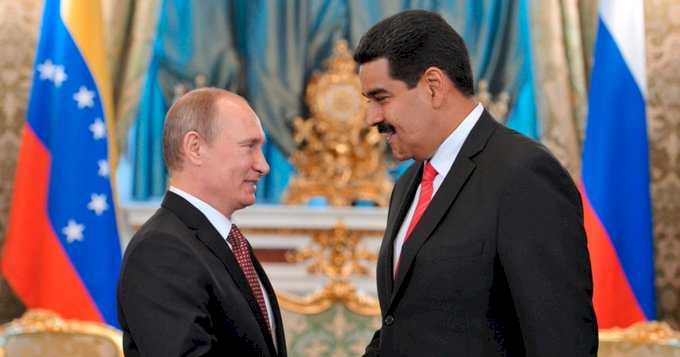
View 112 times
World News on Umojja.com